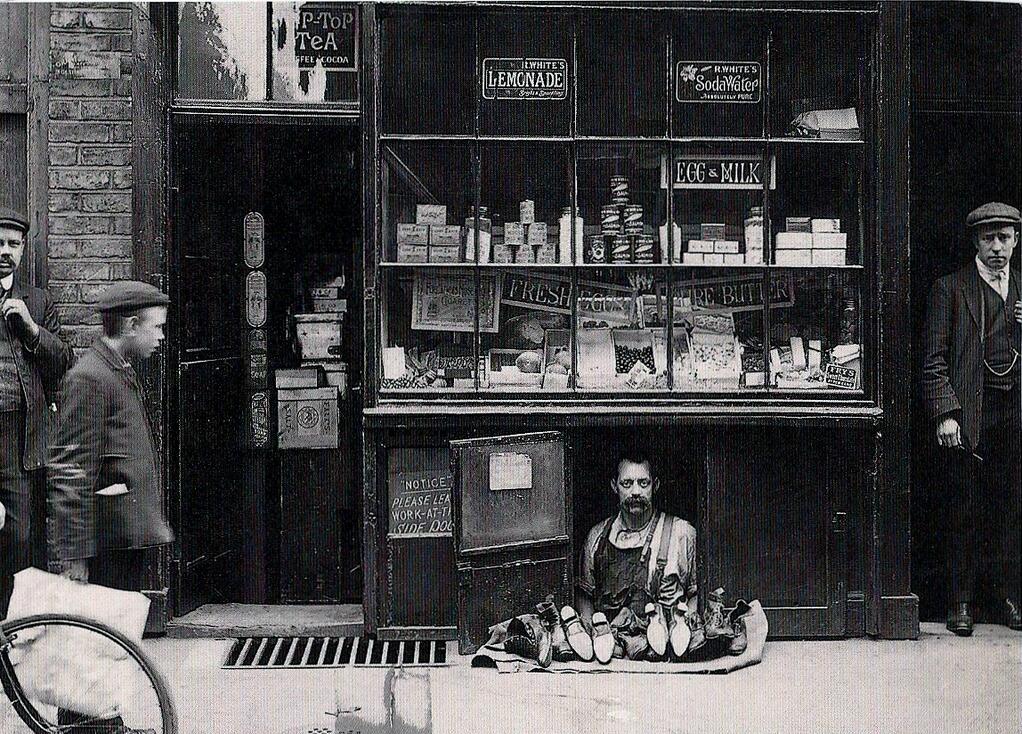
dancisalpino
Shared posts
Molars colonized by ambitious antiquarian architecture

 This pair of striking images of teeth colonized by ambitious antiquarian architecture are part of a campaign for Maxam toothpaste from JWT Shanghai; the slogan is "Don't let germs settle down."
This pair of striking images of teeth colonized by ambitious antiquarian architecture are part of a campaign for Maxam toothpaste from JWT Shanghai; the slogan is "Don't let germs settle down."
MAXAM Civilization-Egypt / Civilization-Rome / JWT Shanghai (via JWZ) ![]()
Japanese earthquake literally made waves in Norway

During an earthquake, it’s the area near the epicenter that sustains the greatest damage, though shaking can sometimes be perceptible at impressive distances. But the seismic energy released by the earthquake actually travels around the globe—several times, in fact—as the planet, in essence, rings like a struck bell. The bigger the earthquake, the louder it rings. And the magnitude 9.0 quake that struck just off the coast of Japan on March 11, 2011 was very big, indeed.
Scientific instruments like seismometers are sensitive enough to pick up seismic waves from distant earthquakes, even on their second or third trip around the planet. (Satellites have even detected the accompanying atmospheric waves.) It doesn’t always take super-precise measurements to know something is happening, however. A groundwater monitoring well in Virginia made the passage of seismic waves from the 2011 Tohoku earthquake quite clear in the form of a rapid two foot rise in water level.
While the tsunami that accompanied the earthquake in Japan was devastating, waves of a very different sort were spawned far away—in the fjords of Norway. A number of witnesses noticed the strange waves, occurring as they did on a calm morning when the fjord waters were otherwise smooth. As some managed to capture on video, the water swelled and ebbed by as much as five feet once per minute or so for several hours—starting about half an hour after the earthquake in Japan.
Read 9 remaining paragraphs | Comments
3d printed casts for a better future
Jake Evill is hoping that someday 3D printed casts will replace the bulky, stinky plaster casts we are all familiar with. De Zeen shares the story...
A patient would have the bones x-rayed and the outside of the limb 3D-scanned. Computer software would then determine the optimum bespoke shape, with denser support focussed around the fracture itself.
Make Tough Decisions and Move On with the Two Minute Rule

When faced with a tough decision, a lot of us will hem and haw for hours or even days, looking up more information, thinking through the options, and procrastinating far more than necessary. For most decisions, it's much better to pick an option, and just move on, and the two minute rule can help.
As you might have guessed, the two minute rule basically consists of setting a two minute timer whenever we have to make a tough choice. It doesn't even have to be two minutes, necessarily, it just has to be a short amount of time, and you have to force yourself to pick a side by the time it runs out.
This is really more of a self-enforced productivity tip than an actual rule, but it's useful to keep in the back of your mind to employ as necessary. If a decision really is a 50/50 toss up, either choice will usually work out fine. As someone who has literally spent hours trying to decide out where to eat dinner, I'll definitely use this going forward.
5 Tips for Lightning-Fast Decision Making | Lifehack
Photo by Peshkova (Shutterstock).
Why retail console games have never been cheaper, historically
Recently, we took a look at the history of how much various video game consoles have cost at launch. Research shows that the upcoming consoles from Sony and Microsoft look much more historically competitive once inflation is taken into account (and once expected price drops are extrapolated). But the cost of the hardware is actually not the most significant portion of what you'll spend on a console over its lifetime. The price of software matters just as much if not more (and these days there are factors like online service and accessory costs). In light, a few readers have asked us to examine just how the prices for games have changed over the years.
This is trickier than it first seems. Console makers don't set a uniform suggested retail prices for every video game released in a given year. Software prices can vary based on publisher, genre, system, format, and more. Game prices are also often reduced quite quickly as a game gets older, so bargain-basement clearance titles can complicate things.
To try and account for these issues, we decided to look at a representative "basket" of games in a variety of genres for each year for which we had reliable data (loosely defined genre list: Action, adventure, fighting/brawler, racing, RPG, shooter, sports, and other). For each genre, we determined a general range of prices by looking for the most expensive and least expensive games we could find with documentary evidence of a contemporaneous advertised price. We then took the average of the high price and the low price for each "basket" to come up with a general range of game prices for each year. To limit the effects of clearance items, we limited our data to games that were being advertised within a year of their original release date (to see the raw data behind our analysis, as well as sources for prices, check out this Google spreadsheet).
Read 13 remaining paragraphs | Comments
The Urashima Effect by E. Lily Yu

Today’s short story discussion focuses on the newest story by E. Lily Yu, “The Urashima Effect“, which is featured in the June 2013 issue of Clarkesworld Magazine. Yu is one of the newer stable of writers whose name in a magazine will have me scrambling to pick up a copy. I really enjoy her work.
Leo Aoki wakes from a cold sleep, disoriented and alone on a ship bound for the planet Ryugo-jo in the Alpha Lyrae system. He has been under for three years, awakened as the ship attains a closer proximity to its destination. Leo’s mission is to establish a small liveable base. His astrophysicist wife, Esther, will join him on a ship launched two years after his. In addition to necessities and entertainments, the ship contains recordings from family and friends, meant to assuage Leo’s loneliness. Esther’s recording begins with a story about a man named Urashima Taro and the rescue of a small turtle. Leo rations this story, completing necessary tasks and engaging in other entertainments to make these moments last. As Urashima’s tale unfolds, the reader is shown how the stories of these two men intersect, and E. Lily Yu leaves her protagonist with a decision that will have the reader contemplating the options for days to come.
E. Lily Yu has crafted a story that focuses on a man in isolation which manages to beautifully convey the importance of relationships and the costs that must be paid in the name of progress.
The story can be read at the Clarkesworld site or listened to via podcast.
After you take some time to read the story, come along and check out my spoiler-filled thoughts and leave some of your own.
E. Lily Yu had me from “Leo Aoki awoke with a shudder in the cold green bubble of the ship…”. There is something simultaneously haunting and compelling about stories in which a character in a space ship awakens from some form of suspended animation. When that character is alone, it gives me chills of anticipation. Leo Aoki wakes up and is unsettled and confused, and Yu communicates those feelings to the reader right from the beginning of the story. What is so effective about this is that as Leo calms and begins to take steps to settle into a routine, with the help of the recordings made for this purpose, the reader also settles into the rhythm of the story.
I found it interesting that the story that Esther tells Leo is a fairy tale, because as a reader it is an unexpected genre shift in an overtly science fictional story. It works well in part because Urashima Taro’s story is engaging in and of itself, but it becomes an important part of the greater whole as the reader, along with Leo, comes to see how this fairy tale parallels his own life.
Some of the themes that I pick up on when I read “The Urashima Effect” are that of the importance of relationships, of coping with loneliness, and the idea that duty and progress sometimes necessitates sacrifice. These ideas are part of the reason I enjoy science fiction stories in which a character, or even a small group of characters, are out in the vast reaches of space, their only liveable space being the confines of their ship, with no guarantee of success. There is something so powerful and terrifying and exciting to imagine what an adventure like this would be like.
As I read Urashima Taro’s story I felt myself wanting to shout “no”, wishing I could reach into the story and stop him when he decided to go back to tell his family that he was okay. His act of kindness to a small, defenseless turtle opened up this wonderful experience to him in which he found love and to see that all swept away is so sad. I love my parents. I love them very much. In spite of that fact I found myself wishing that Urashima had been content to stay where he was and enjoy the love that he had found, especially when I think of it from a romantic perspective, knowing that his parents had each other. That being said, they would no doubt be devastated and as a loving son Urashima wants to shield them from that heartbreak. I also wondered if my reactions were more of a Western reaction, something born out of my culture that is different from Eastern cultural norms regarding familial relationships.
A typical question regarding Urashima’s story that might be asked is why did the Princess not explain to him what would happen if he left? My only answer to that is the fact that fairy tales have their own internal set of rules and life in a fairy tale setting does not often conform to expectations of life in the mundane world.
While Urashima Taro’s story is very poignant on its own, it becomes more so when it is revealed that Esther told Leo this story as a means of beginning a very difficult message to him. Given that both of these characters are scientists who had been briefed and prepared for this method of space travel it makes such great sense within the setting that Yu established that Esther would realize the importance of Leo acclimating to his environment first before the truth of his circumstances was revealed. Urashima’s story also acts to prepare the reader for the sadness that is to follow when Esther tells Leo that her mission has been canceled and that he must make a very difficult decision.
On one hand it is obvious from what little we see of Leo and Esther that theirs is a deep love. It seems especially true for Leo as it appears that he would have been the kind of person who would very easily have isolated and lost himself in his work if it was not for her. I imagine what it must have been like for Esther as she recorded this message and programmed the ship so that Leo would have the option of returning to her. Esther’s own sense of duty would be fighting against all her instincts to somehow do all she could to stop Leo from going in the first place. The entire time she would be recording for Leo she would be struggling with the fact that she was losing her husband. Even if he chose to return, she would be so much older than her and would not be the same woman. She points out in her recording that “at this moment I love you”. I could not help reading into that statement that Esther was also a pragmatist. She is young, she has a whole life ahead of her. Would she not feel on some level that Leo had passed away? What if she were to fall in love again? Have a new family? What would Leo return to if he returned?
On the other hand you have Leo. This is the mission he had worked and trained for. This was his career, his life’s work would be tied up in this mission and its success. His wife also devoted her time and energy in her career to ensure this mission’s success. Does he abandon that to return to Earth in the hope that his wife is still alive? And if so what would that relationship be like with her having aged and he not having done so at all? Could that kind of relationship work on any level? Would she resent his youth? Would he return only to be caretaker instead of lover? I agonized over this for days after I read this for the first time.
What would I do? What would you do?
I’m not certain that Yu indicates what choice Leo made. My interpretation leans towards him going ahead with his mission, and I have to admit to feeling guilty that this is the decision I hoped he would make. I was surprised that E. Lily Yu drew that out of me as I am such a hopeless romantic; under usual circumstances I would be advocating that he yank the lever and return to Earth. I have to admit that it is that small part of me that longs for an adventure in space that leaves me hoping that he will continue on, land on the planet, and succeed in establishing a base there. Of course the “have my cake and eat it too” part of me hopes that whatever conflicts have scrapped Esther’s mission will be resolved in a reasonable amount of time and that she will once again be winging her way towards Leo. I like to dream that he will one day look up in the sky and see a new star and it will be Esther coming to him.
I hope you enjoyed “The Urashima Effect” and would love to know both your thoughts on the story and what you would do if you were in Leo’s place.
________________________
The image used for this post is a work of art created by one of the great science fiction book illustrators, Vincent di Fate. Vincent di Fate ranks right up with John Berkey, John Harris and contemporary artist Stephen Martiniere in my estimation. He creates images of space that make me believe that the adventures we all wish we were having are indeed possible.
The next Sunday short story discussion with be Sunday, July 14th. We will be reading a sweet fantasy story, “Princess Lucinda and the Hound of the Moon” by Theodora Goss. You can read the book on the Lightspeed website linked above or listen to the podcast at that same link. In my earlier SF Signal review of the story I wrote:
The Queen of Karelstad cannot have a child and though her husband tries to comfort her with the assurance that rule will pass down through his nephew, her sorrow will not be abated. On one cheerless, cold, moonlit night Queen Margarethe escapes the pomp of the evening’s celebration to walk the grounds. When she returns she does so with a baby found in a basket underneath a chestnut tree. Though they advertised the discovery, no one answered and the Queen became the mother of a daughter, Lucinda. Princess Lucinda was a fairly ordinary child, though she liked to read books and play in ways not typical among the children of royalty, and her life was nice if unremarkable. On the day of her sixteenth birthday, a rumbling shakes the castle and a voice announces that Princess Lucinda is being summoned. This extraordinary occurrence in her otherwise ordinary existence leads Lucinda to revelations that will change her life and the lives of those around her.
Theodora Goss has created a fairly straight-forward fairytale that is nevertheless lovely in the telling. She has built her imagined kingdom on a real-world framework which adds elements to the story that ground it. Goss captures simple beauty with her prose. It may seem dismissive to describe a story as “sweet”, but “Princess Lucinda and the Hound of the Moon” is just that, leaving the reader with a warmly satisfied smile.
Finally A Chance To Bend The Weather To Your Will
It always rains the day you're moving or gets really icy when you have a lot of driving ahead of you. Murphy's Law definitely applies. If you could control the weather things would be much easier, and Design I/O wants you to feel like you can. Their installation allows participants to make it rain, produce wind, drive snow and bust out of ice blocks, all with a wave of your arm.
The exhibit uses multiple HD CCTV cameras and a Blackmagic UltraStudio Mini to track users' heads, hands and feet and react to their gestures. These data work with special green screening effects created through openFrameworks to enable lightening bolt wielding and tornado conjuring. If you've ever wondered how good a Poseidon you would be, this is the way to check. [Creative Applications]
This Ax Is Really Scary And Then You Realize It Has A Slingshot Inside
This week Joerg invited some students from the Technical University of Munich to create general mayhem with him via a steel axe. But an axe by itself isn't menacing/relevant enough. It obviously has to double as a slingshot. And it does! The handle of the axe is hollow . . .
The device houses four aluminum tubes, a magnesium firestarter and three steel tipped bolts. Because the axe is meant to be a survival tool (by the way the axe is meant to be a survival tool) one of the bolts has an active carbon water filter and can be used as a straw for drinking unpurified water. The bolts fire through the center barrel of the slingshot, and are pretty accurate, partly because they're forward weighted. Not that you were going to, but never trust an axe-wielding engineering student again. [Slingshot Channel]
The Weirdest Urban Ecosystems On Earth
Hate Comic Sans? Blame this Microsoft virtual assistant

It’s hard to disagree that virtual assistants have wrought little good in this world. From Clippy’s benignly stupid questions to BonziBuddy’s spyware and evil homepage resets, it’s a wonder that Siri or Google Now have been able to reclaim any goodwill. But it turns out virtual assistants have a more lasting negative impact than general annoyance: the font Comic Sans.
Comic Sans lore says that Vincent Connare, a designer on a Microsoft consumer software team, saw a working prototype of the assistant Microsoft Bob back in 1994. This featured a cartoon dog named Rover speaking in text bubbles and, incongruously for a cartoon, Rover spoke in Times New Roman.
In what can now only be described as dramatic irony, Connare was shocked and appalled at how ugly Times New Roman looked coming, ostensibly, out of a cartoon’s mouth. He decided that a more comic-like typeface was needed.
Read 6 remaining paragraphs | Comments
A Guide To Everything Google Has Been Asked To Censor

The internet is all about the free flow of ideas, right? Collaboration! Discourse! Sharing! The day to day reality of what we do online may not always be quite so idealistic and ideologically motivated, but the open underpinnings are there. Except, of course, when they're not at all. This visualization, published by Sebastian Sadowski, uses Google's transparency data to visualize all the things the company has been asked to censor.
The governments of many countries routinely ask Google to suppress content across sites like Google Search and YouTube. Reasons range from national security, to suicide promotion, and government criticism. There are also categories for "other" and "reason unspecified." It's interesting to see which countries are better or worse than you thought they would be. And check out that little chunk of mint green "reason unspecified" censorship on the U.S. chart. You can get the gist below, but because of the interactivity you really have to explore on visual.ly to see what's going on. Even though Google's data are openly available, a chart like this allows you to take everything in quickly because someone did the processing work for you. So no excuses. [Digg]

Make Cold-Brewed Coffee in Your Hotel Room

Most hotel rooms these days come equipped with a cheap coffee maker, but let's face it, that's not going to do the trick for everyone. If cold-brewed coffee is more to your liking, you can make it yourself right in the room.
Kent Brewster shares this clever idea on Medium. The only extra material you'll need is a tumbler of some kind, but you could probably get one from room service, or pack your own for a long trip. Just put one of your room-provided coffee filter packs in the bottom of the cup, and fill the rest with water. Then (carefully) place a coffee pot over the cup, and turn it upside down overnight.
Come morning, you'll have a highly concentrated batch of coffee waiting for you. If you want it hot, just run some water through the coffee maker and directly into the pot. Be sure to check out the source link for more details.
Cold-Brewed Coffee in Your Hotel Room | Medium via The Kitchn
Efeito Matrix com 625 pinholes analógicas
O conhecido efeito matrix já foi mostrado em diferentes filmes. Sabe aquele efeito onde o cara fica congelado e diversas câmeras passeiam por ele?
Agora imagina fazer isso com 625 câmeras pinhole, uma das mais simples analógicas existentes?
Dá uma olhada no making of todo e depois do jump tem o clipe.
Five Best Cloud Storage Providers

Free cloud storage is easy to come by these days—anyone can give it out, and anyone can give out lots of it. However, the best cloud storage providers give you more than just storage. They offer availability, multi-platform support, security, app integration, and more. This week we're going to look at five of the best cloud storage providers on the market, thanks to your nominations.
Earlier in the week we asked you to nominate the cloud storage providers you thought were the best. You came in with tons of great nominees—way more than we could highlight here. Regardless, some definitely stood higher than the others, especially considering the last time we asked you about cloud storage services. Here's what you said:
Dropbox
If you're reading this, you probably already know what Dropbox is. We've covered Dropbox and services that support it extensively, and most of you here have followed along with our tricksto getas much space as you possibly can. Many people bemoan Dropbox's position at the top of the pack as being a matter of popularity and the fact that they were one of the first to really popularize cloud storage (referral links and storage bonuses didn't hurt), but it's not just popularity that makes Dropbox special. Support for virtually every operating system, both desktop and mobile, experimental and beta builds that add tons of useful features, and a vast third-party developer community taking advantage of its open APIs to build applications on top of it make Dropbox a great cloud storage service, whether you use it for your files and just sync with the desktop clients, or you have another favorite app that uses Dropbox to keep your files synced across devices. Dropbox has its woes (especially with regard to security), but it's a stellar option—if it weren't, people wouldn't keep using it. Plans start with 2GB, but you can get way more than that via referrals, mobile app use, photo and video uploads, or by using an EDU address. You can check out their plans here.
Google Drive
Google Drive's inclusion in the top five came as a bit of surprise, especially considering some of the older contenders that fell off due to lack of votes. Drive has only been around for about a year, but the fact that it combines the tools that formerly known as Google Docs (Docs, Spreadsheets, Presentations, and Drawing), all of your files created with those tools, and 15GB of storage for anything else you want makes it a strong contender. After all, if you're using those tools in your day to day work, it makes sense to use Google Drive for file storage as well. Plus, the fact that it's available in OS X, Windows, iOS, and Android makes it useful at your desk or on the go. Plus, with the right plugins, it can be even more powerful than other services you may also use. Those of you who nominated Google Drive almost unanimously praised its tight integration with the Google services you already use, and of course its pricing. 15GB for free, and you can go here to check out their other plans (as well as see your current utilization) or go here to read more about Drive.
SkyDrive
SkyDrive used to be pretty clunky and difficult to use, but Microsoft's cloud storage service has come a long way since those days. It's tightly integrated with Windows now, especially Windows 8 for desktops and tablets, and if you use Office 2013 at all—either on the desktop or on the web—using SkyDrive as cloud storage for all of your files is quick and seamless. SkyDrive also has mobile apps for Windows Phone, iOS, and Android, so you can stay up to date on changes to your files and access them on the go, anywhere you have an internet connection. Desktop clients for Windows and Mac make working with your saved documents and syncing them easy too. If you got in while the latest iteration of the service was still in beta, you probably have a cool 25GB of storage, but even if you signed up today, you'd still walk away with 7GB of storage, 10GB if you're a student, with the option to buy more storage if you need it or run out. SkyDrive also has a third-party app ecosystem and open APIs, and a number of tools that tie nicely into it. Those of you who nominated Skydrive praised it for its Microsoft integration, especially with Office and Windows, and its third party app support.
SugarSync
SugarSync has been around for a long time, and it's incredibly richly featured. It's not as widely used as some of the other big names, but in some ways, it really should be. SugarSync has insanely detailed syncing options, and can back up or sync any files or folders you choose on your system, not just a single folder and all of its contents. SugarSync can work like a backup client, automatically backing up your files as you change them, or you can use it like a traditional syncing cloud service, complete with a drive on your system you drop files in. The service keeps an impressive revision history for each of your files, lets you share, lock down, or password protect individual files on the web or on the desktop, and even makes streaming media to your mobile devices easy. While they don't really put their free plan up front, you can get 5GB for free, and make use of the service's wealth of features, along with their desktop apps for OS X and Windows and their mobile apps for iOS, Android, and Windows Phone. If you need more storage, their pricing plans are pretty attractive.
Bitcasa Infinite Drive
Bitcasa was surprising contender, considering some of the names that fell short of the nominations, but it's a great service to mention. Aside from having virtually unlimited storage options—we mean in the terabytes, easily, Bitcasa has syncing clients for Windows and OS X, and mobile apps for Android, iOS, and Windows Phone (including tablet versions of all three). Bitcasa knows that you'll probably use that wealth of space for photos, music, and movies, and makes it easy to stream that content to your mobile devices when you're on the go, or to your desktop when you want to use it. They even have a Chrome extension that lets you use Bitcasa as your downloads folder. Bitcasa is free for 10GB, but if you're willing to pay, you can get infinite storage for $99/yr. Seriously—just keep uploading files and they'll be there. If storage is what you really need—not extra bells and whistles—and you're willing to pay for it, Bitcasa is worth a look.
Now that you've seen the top five, it's time to put them to a final vote to determine the community favorite:
We have to give an honorable mention this week to everyone who suggested you Do It Yourself, essentially using a NAS or other storage device at home packed with disks and any free software that lets you access them anywhere you go from any computer whether you're on your home network or off of it. It's super easy to roll your own cloud storage solution with tools like OwnCloud, or just by giving your NAS locked down access to the internet so you can get to your files when you're away. Either way, hats off to those of you who choose to just do your own thing. Besides, someone has to keep the NSA on their toes, right?
Another honorable mention this week goes out to Box (formerly Box.net), which barely missed the top five, and earned high praise from many of you for shoveling out up to 50GB of free space to new users in some cases, and you can still pretty easily find services and promotions offering tons of free space with Box just for signing up and downloading the client. It's not new—it's been around for ages (and was a contender the last time we asked you about cloud storage services), and walks the line between being a consumer-friendly storage and syncing solution and an enterprise-level document management service.
Speaking of referral links, one contender that also missed the top five (but wouldn't, if its supporters had voted correctly instead of just pimping referral links) was Copy, a relative newcomer who's only distinguishing feature, as far as we can tell, is really just that you get 15GB to start, and there's no real cap on how much more you can earn if you get the world to click on your referrals—you get 5GB for each person you get to sign up. Note: Please don't spam the discussions with your referral links. Comments with referral links will be dismissed.
Have something to say about one of the contenders? Want to make the case for your personal favorite, even if it wasn't included in the list? Remember, the top five are based on your most popular nominations from the call for contenders thread from earlier in the week. Don't just complain about the top five, let us know what your preferred alternative is—and make your case for it—in the discussions below.
The Hive Five is based on reader nominations. As with most Hive Five posts, if your favorite was left out, it's not because we hate it—it's because it didn't get the nominations required in the call for contenders post to make the top five. We understand it's a bit of a popularity contest, but if you have a favorite, we want to hear about it. Have a suggestion for the Hive Five? Send us an email at tips+hivefive@lifehacker.com!
How to Make Rainbow Pasta and Show Pride

This post originally ran 3/18/2013. We're re-running it in celebration of DOMA's demise, the overturning of Prop 8, and in solidarity with our LGBT brother and sisters. Plow through a couple of bowls of rainbow pasta today to be ready for whatever the SF Pride Parade throws at you.
It's been a brutal day at work, you're dead tired, and you realize it's your turn to make dinner for the kids. But rather than concede defeat (read: order take out), here's a simple pasta-based hack that takes practically zero effort and will keep your kids entertained so you can maybe enjoy a meal in peace for once.
You Should Do This If:
You aren't completely dead inside. Or if you have kids.
Moment of Satisfaction:
Freaking people out with your newly multicolored tongue.
Biggest Pain in the Ass:
Keeping your hands from looking like you've been in the kids' finger paints again.
Materials and Tools Required
- 1 pound of pasta (TK was used here but any shape will work)
- 5 colors of food coloring
- 5 ziplock bags
- 1 large pot
- 1 colander
- 1 pinch of salt
Difficulty and Cost
If you can cook pasta and place it in a plastic bag, you can do this.
Building It

First, fill the pot with water, add a pinch of salt, cover and place it over high heat. Wait until it comes to a full rolling boil before adding the pasta. Cook it for however long the box says it takes to reach al dente, then remove the pot from the heat, pour its contents into the colander, and immediately douse the pasta with cold water (this stops it from cooking any further)

As the pasta is cooking, take a moment to to put about twenty drops of each color food coloring into an individual bag and add two tablespoons of water.

Once the cooked pasta has been initially doused in cold water, transfer an equal portion into each bag. Close the zipper, give each bag a good shake to coat and let the pasta marinate for about five minutes.

After that, drop each bag of pasta back into the colander and give it a good rinse with cold water to remove any excess dye and lock in the absorbed tinting before transferring it back to the pot. Add a tablespoon of olive oil to keep the pasta from sticking if you like. Use a pair of serving tongs to toss the stands and serve. A small pat of butter and grated parmesan is always a hit with the kids.
Or, if you're lazy:
Eat your plain yellow pasta like a schmuck.
The Word On The Street: For The Love Of Big Brother
Fantastical illustrations of airships from the early 20th century
15 Scifi Mockumentaries That Will Leave You Questioning Reality

Yes, we're still disappointed that we didn't get a World War Z mockumentary. After all, science fiction and horror lend themselves quite well to the faux-documentary format. So we're kicking back with 15 speculative mockumentaries, from a silly Star Wars lark to an earnest look at Britain on the eve of nuclear war.
Fleshy piranha plant sculpture casts Mario Bros. in a horrifying light

Artist Karen, a.k.a. dogzillalives, puts an extra creepy spin on the already freaky carnivorous plants. Her sculpture looks like someone spliced human DNA with one of the piranha plants from Super Mario Bros.
Bacterial communities swarm into gorgeous works of art
Man creates “invisible headphones” by implanting magnets into his ears
A man has implanted magnets into his ears to use as invisible headphones in a remarkable example of DIY transhumanism.
Rich Lee, a self-described transhumanist and body modification fan (or "grinder"), was inspired by a similar idea posted on the Instructables site that featured two small in-ear magnets stimulated with a magnetic coil necklace connected to an amplifier (you can see the video with this piece). The difference is that Lee actually implanted his inside his fleshy lobes.
The coil necklace is completely hidden by his clothing, and the scars from the implants are also unnoticeable, so it's unlikely you'd realize that as he was standing in front of you he could be listening to music. In a way it's reminiscent of the bone vibration Google Glass uses instead of conventional earphones.
Read 7 remaining paragraphs | Comments
Custom painted Gromit statues unleashed all over Bristol

July 1st marks the start of the Gromit Unleashed charity art exhibition in Bristol. Eighty statues of Wallace & Gromit's beloved stop-motion pooch are appearing all over the city, each custom designed by a different artist.



















